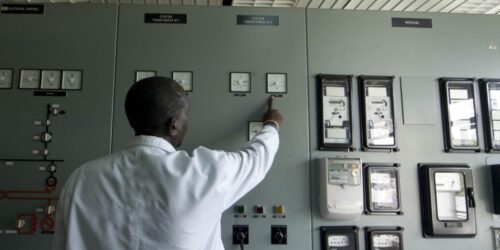Energy costs have risen by over 50 percent in one year – from 4.2 rupees per unit in August 2020 to 6.4 rupees per unit in August 2021. The reason disturbingly is the policy dating back decades to pass on poor sector performance onto the hapless consumers for which government policy is to blame.
The argument that this can be laid squarely at the doorstep of previous administrations is nullified if one considers the fact that the PTI administration has been in power for three years – a time period sufficiently long to change policy and/or strategy. And if one adds the element of the agreement by the incumbent government to stringent International Monetary Fund (IMF) conditions with respect to the power sector (with World Bank taking the lead in this instance) that envisage not only politically-challenging structural adjustments (that sadly remain pending) and raising tariffs (pending since June 2021 this year after the newly-appointed Finance Minister Shaukat Tarin refused to implement the conditions agreed in February in the second to the fifth review) one may conclude as to one reason why the sixth review remains stalled.
The policies that require an urgent revisit are three-fold. First, setting a uniform countrywide tariff while disabling distribution companies to set the tariff as per their financials (with all discos operating at losses though some considerably more than others) and not releasing the subsidy required to plug the gap. In the current year, the subsidy required was 550 billion rupees with the government budgeting only 330 billion rupees with the shortfall expected to further fuel the circular debt that has increased from 1.2 trillion rupees three years ago to the current 2.4 trillion rupees. An obvious solution is to ensure that the amount disbursed as subsidy to this sector is as per the sector’s requirement so that the flow of circular debt is reduced massively. Another is to ensure that non-payers/theft is dealt with immediately irrespective of the offending institution/sectors/influentials.
Secondly, capacity charges, defined as payment to generation companies irrespective of whether power is purchased or not, agreed under the various policies by previous administrations, no doubt places a heavy burden on the end consumers. The present government to its credit has successfully negotiated with Independent Power Producers (though there have been some delays in making the agreed payment under the 2002 policy due to an ongoing investigation by National Accountability Bureau); however, the many IPP projects established under the China Pakistan Economic Corridor (CPEC) have so far not agreed to renegotiating the terms of their contract. To deal with capacity charges to these IPPs the government is proposing sale of electricity at cheaper rates during lean consumption months – a strategy that would minimize if not eliminate capacity charges. In this context, one would hope that implementation is prompt. Again one would have to wait and see if implementation is as per the envisaged strategy.
And finally, the government acknowledges that there is excess generation capacity due to the previous government agreeing to conditions with Chinese companies under CPEC and that the issue is one of distribution and transmission losses as well as capacity to evacuate electricity; and yet it is investing large sums to increasing generation and not enough on strengthening the obsolete transmission network. Granted that the bulk of the envisaged increase is from hydel which is the cheapest form of energy; however, that neither takes account of the fact that Pakistan is a water-scarce country nor the fact that capacity charges would continue to be paid. Sadly, it increasingly appears that the present government is following the policies of the past – burdening the consumers with higher tariffs for its reluctance in taking decisions relating to structural reforms.






